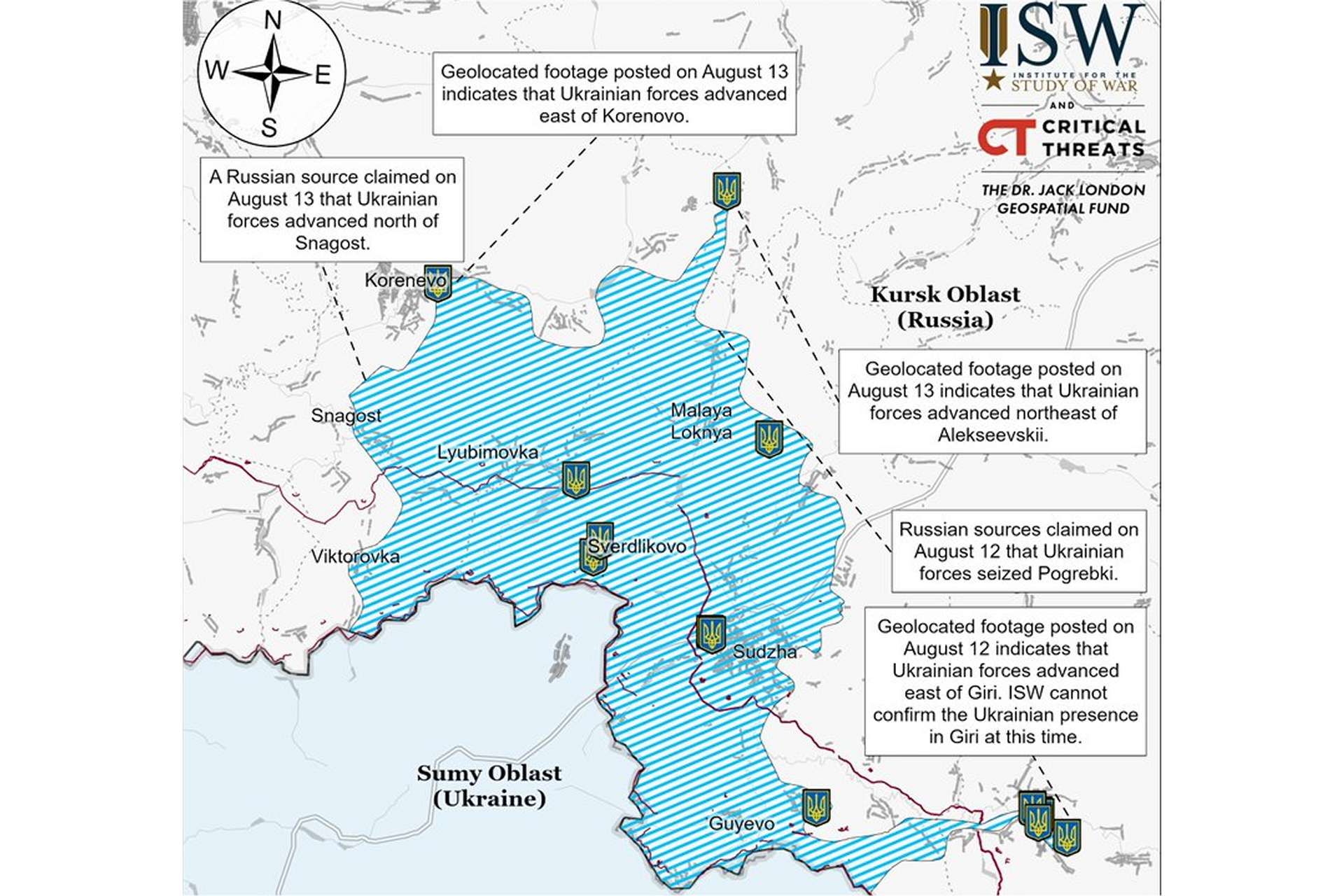Breaking News
Ukrainian Breakthrough in Russia: Current Situation Overview.
The Russia-Ukraine conflict, which began in February 2022, took an unexpected turn in early August 2024 with a major Ukrainian ground offensive in Russia's Kursk region. This operation, marked by advances on Russian territory, has opened a new front in the conflict, challenging Russia's defensive strategy and exacerbating tensions within the Kremlin. This article tries to provide a detailed analysis of this breakthrough, examining the known facts, Ukrainian perspectives, Russian reactions, and potential implications for the future of the conflict.
Follow Army Recognition on Google News at this link

Russian combat footage in the Kursk region shows Ukrainian armed forces. (Picture source: Russian MoD)
What We Know
Since the start of the war in Ukraine, the Russian invasion has been characterized by intense fighting and a war of attrition on multiple fronts. However, on August 6, 2024, Ukraine shifted its strategy by launching a large-scale ground offensive in Russia's Kursk region. This operation marked a major turning point in the conflict, forcing thousands of Russian civilians to flee and exposing unexpected weaknesses in Russia's defenses.
The Ukrainian operation began with a massive troop incursion into the Kursk region, a Russian border area, on August 6, 2024. After six days of fighting, Ukrainian forces claimed control of 74 localities over an area of approximately 1,000 km², a territory 12 km deep and 40 km wide. Ukrainian troops advanced up to 25 km in some places, taking control of strategic points such as the town of Sudzha, a crucial hub for the transit of Russian gas to Europe.
Russian authorities confirmed that over 120,000 civilians had fled the region, while the Kremlin, in an attempt to regain control, ordered an anti-terrorist operation led by the FSB under the direction of Alexander Bortnikov and also repositioned several thousand troops. This Ukrainian offensive exposed flaws in Russia's defense and led to a strategic upheaval that could have lasting repercussions on the conflict's dynamics.

Map of Ukrainian breakthrough in Russia. (Picture source: Institute for the Study of War)
Ukrainian Perspectives
For Ukraine, this offensive represents an attempt to redefine the terms of the conflict. President Volodymyr Zelensky made it clear that the main objective of this incursion was to neutralize threats from Russian positions in Ukrainian territory. Indeed, the Kursk region has served as a launch base for numerous attacks against Ukraine, including more than 2,000 strikes since June 2024.
This offensive also allowed Ukraine to strengthen its "exchange fund" by capturing Russian soldiers who could be exchanged for Ukrainian prisoners. Furthermore, by forcing Russia to redeploy troops to defend its own territory, Ukraine hopes to relieve pressure on other fronts and gain a strategic advantage in future negotiations.
Zelensky also emphasized that this operation was aimed at demonstrating Ukraine's ability to bring the war to the aggressor's territory, a strategy that could both demoralize the enemy and galvanize international support for Ukraine. This aggressive approach reflects a desire to overturn the conflict's dynamics, shifting from a defensive posture to a proactive offensive strategy.

Combat footage in Russia. (Picture source: Social Media)
Russian Reaction
The Kremlin's reaction was marked by a combination of public denial and military countermeasures. Vladimir Putin quickly ordered an anti-terrorist operation to contain the incursion while deploying military reinforcements to the Kursk region. Despite these efforts, the situation on the ground remains critical for Russia, with reports of significant losses among Russian forces and an inability to completely repel Ukrainian forces.
Moscow's failure to protect its borders has led to a crisis of confidence among the Russian population. Many civilians in the affected areas feel abandoned by their government, as evidenced by accounts of disillusioned civilians due to the chaotic response of local authorities in Kursk. The testimonies collected show a deep sense of disarray, with poorly organized evacuations and a breakdown in communication between authorities and the population.

This offensive allowed Ukraine to strengthen its "exchange fund" by capturing Russian soldiers who could be exchanged for Ukrainian prisoners. (Picture source: Social Media)
Strategic Implications
The Ukrainian offensive in Kursk could have major repercussions on the conflict's future. On one hand, it forces Russia to divert military resources from other fronts, thereby weakening its offensive capabilities in Ukraine. On the other hand, it demonstrates Ukraine's ability to conduct offensive operations on enemy territory, which could alter strategic calculations on both sides.
For Ukraine, this operation could also strengthen its position in potential peace negotiations. By showing that it is capable of taking decisive action on enemy territory, Kyiv could secure greater concessions from Moscow. Moreover, this offensive could galvanize international support, particularly among Western allies, by demonstrating the effectiveness and resilience of the Ukrainian armed forces.
In contrast, for Russia, the inability to repel this incursion could weaken Vladimir Putin's position, both domestically and internationally. Questions about the competence of Russian military leaders and the country's defense solidity could exacerbate tensions within the Kremlin and among the Russian population.
Conclusion
The Ukrainian offensive in the Kursk region marks a new phase in the Russia-Ukraine conflict, with potentially profound implications for the conflict's future. As fighting continues, the coming days will be crucial in determining whether Ukraine can consolidate its gains or if Russia will be able to mount an effective counter-offensive. Regardless of the outcome, this incursion has already demonstrated Ukraine's ability to surprise and destabilize its adversary, challenging the dynamics established since the war began in 2022.

The Russia-Ukraine conflict, which began in February 2022, took an unexpected turn in early August 2024 with a major Ukrainian ground offensive in Russia's Kursk region. (Picture source: Social Media)


























